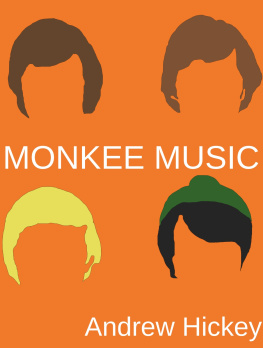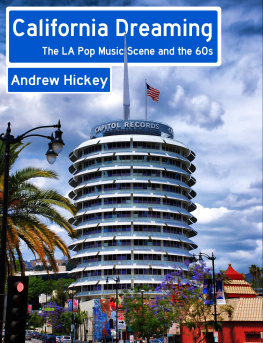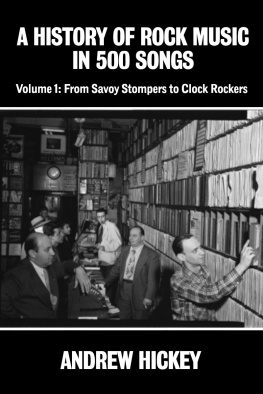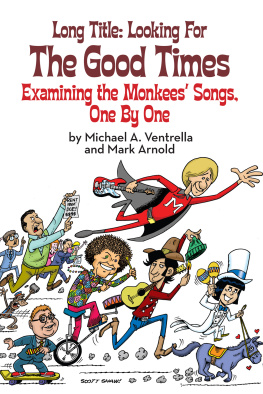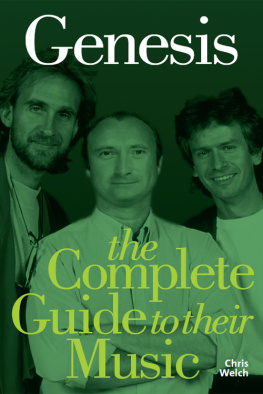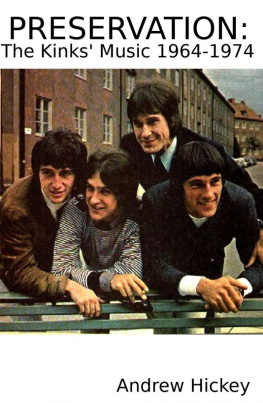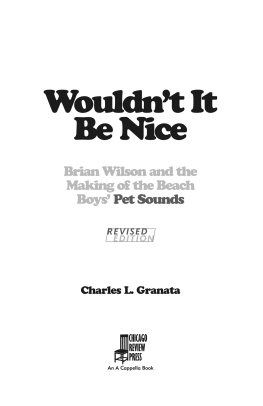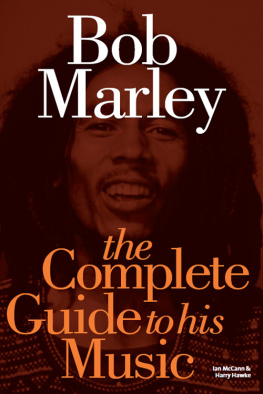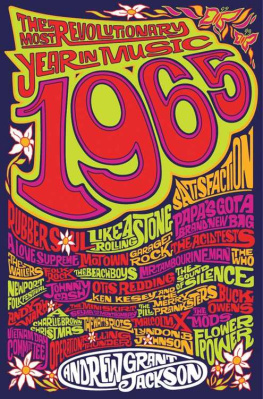Introduction
Why would anyone write a book on the Monkees music? Everyone knows they didnt even play their own instruments. As The Simpsons put it so memorably, Thats not even Mike Nesmiths real hat!
Except thats not the whole story, not by a long way.
The Monkees didnt start as a band; rather they started as a TV show about a band, and as Micky Dolenz often points out, in those early years criticising them for not being a real band was much like criticising Leonard Nimoy for not really being able to pilot a starship.
But very quickly, they took control of their music and, Pinocchio-like, became a real band. Contrary to myth, many of the Monkees most famous hits, including Daydream Believer, Pleasant Valley Sunday and Randy Scouse Git, feature the band themselves, playing as well as singing.
And a remarkable thing resulted. The four Monkees hadnt been chosen for their musical compatibility, and all four had very different ideas about what music they should make once they had the ability to take control of their own musical direction. Michael Nesmith wanted to make straightforward country music and oblique psychedelic rock. Davy Jones wanted to do good old-fashioned tunes his dad could hum. Micky Dolenz wanted to be James Brown, when he wasnt busy doing experimental electronic noises. And Peter Tork wanted to be a folk banjo player.
Of course, these four strong forces all pulling in different directions couldnt last long. It was barely two years between the bands first single, Last Train to Clarksville, and Peter Torks departure, which marked the beginning of the end for the band. But in that time, the band released six albums, at least four of which are qualified masterpieces, as good as anything by any of their more critically-acclaimed contemporaries.
This book, then, deals with the music - not the TV and film appearances, not the infighting or the personalities, except insofar as those impact the music the band made. In it I examine every song released by the Monkees throughout their career.
As many of these songs were recorded on multiple occasions and in multiple versions, and have been released on multiple CDs, I have had to find some way to sensibly deal with this. My rule is - if a song appears on a studio album, I deal with all recordings of it in the entry for that album. If it doesnt appear on a studio album, I deal with all versions of it on the first album for which it is available as a bonus track, and if it only appears on a live album I deal with it on the live album. Unless otherwise stated, Im using the deluxe editions of the albums, when those are available. In the case of The Monkees and More of the Monkees, Im using the super deluxe editions those albums were released as two-CD deluxe versions, but then more recently released as three-CD versions like the deluxe versions of the post-Pisces albums. There is one exception to this, which is the song Propinquity, which appears on the deluxe edition of The Monkees, but not on the super deluxe version this has still been dealt with in the entry for The Monkees.
A note on the ordering of the bonus tracks I have dealt with songs on albums in the order in which they appear on the albums, but as there is no canonical ordering for the bonus tracks, they are dealt with in orders that seem sensible to me given issues such as page layout and wanting to avoid dealing with too many similar songs in a row (though the latter is sometimes unavoidable). If the location of a song isnt immediately apparent, the song index at the back of the print version should provide the information you need. (Ebook readers can, of course, locate it by text search).
Sometimes I may appear harsh about some of this music. Thats because some of it is, frankly, awful. But given that the Monkees recorded over two hundred separate songs (many in multiple versions) between 1966 and 1970, while also touring the world, appearing in a feature film, making fifty-eight episodes of a TV show plus a TV special, and in that time also trying to do all the normal young-adult things like get married and have children, whats amazing is that most of it isnt.
Likewise, I may seem harder on some band members output than on others, but that doesnt mean I have anything less than the greatest respect for their achievements. This is a band that deliberately gave up on commercial success in order to create the music they wanted to - and which yet still managed to have some of their greatest commercial successes after doing just that.
This second edition of the book has been revised heavily. A lot has happened in the six years since I initially wrote this book Davy Jones tragic death, Michael Nesmith coming out of retirement, a new Monkees album, and more and this is reflected in the text. A lot of the text is updated to reflect new information, and new perspectives on the band, but the basic thrust of the book that the Monkees were and are a band who should be taken seriously as musicians remains the same.
I saw three of the Monkees perform live, in May 2011 (and since then I have seen them in other combinations, and solo, on several occasions). They played over forty songs, almost every one a classic piece of pop, and did so while entertaining for every second a crowd that had come only to hear the hits. Theyre some of the hardest-working entertainers Ive ever seen, and even if they hadnt been able to play a note, that wouldnt have made a difference.
But during the show, Peter Tork played keyboard, guitar, banjo, french horn and bass, Micky Dolenz played guitar, drums and tympani, and Davy Jones played guitar and percussion. Of course Ive no idea if they were their own instruments, or if they were rented. But that doesnt matter.
Like the songs, they made them their own.
Part I: The Bubblegum Period (October 1966 - January 1967)
The Monkees
The Monkees first album was put together very quickly, in anticipation of the bands TV debut. For the pilot of the TV show, several songs by Screen Gems writers Tommy Boyce and Bobby Hart had been recorded by Harts band the Candy Store Prophets, as the four band members hadnt yet been cast. As a reward for their work on the pilot, after sessions with legendary producer Snuff Garrett, who wanted Davy Jones to be sole lead vocalist, had broken down, Boyce and Hart were allowed to supervise the initial batch of sessions for the show and the first album (albeit with assistance from the more experienced Jack Keller on early sessions).
In fact, so much material was needed for the show that songs originally recorded during these sessions, but put aside or only used on the TV, would turn up on records (sometimes in rerecorded form) for the rest of the bands career. Sometimes two sessions would be going on at once, with Michael Nesmith (who was allowed to write and produce two tracks on the album) running one session in one part of town while Boyce and Hart were running another elsewhere.
Surprisingly enough, the finished product is a rather good album of its type. While nowhere near as musically interesting as the results once the band took control of their own career, theres still some great pop music mixed in with the filler.

